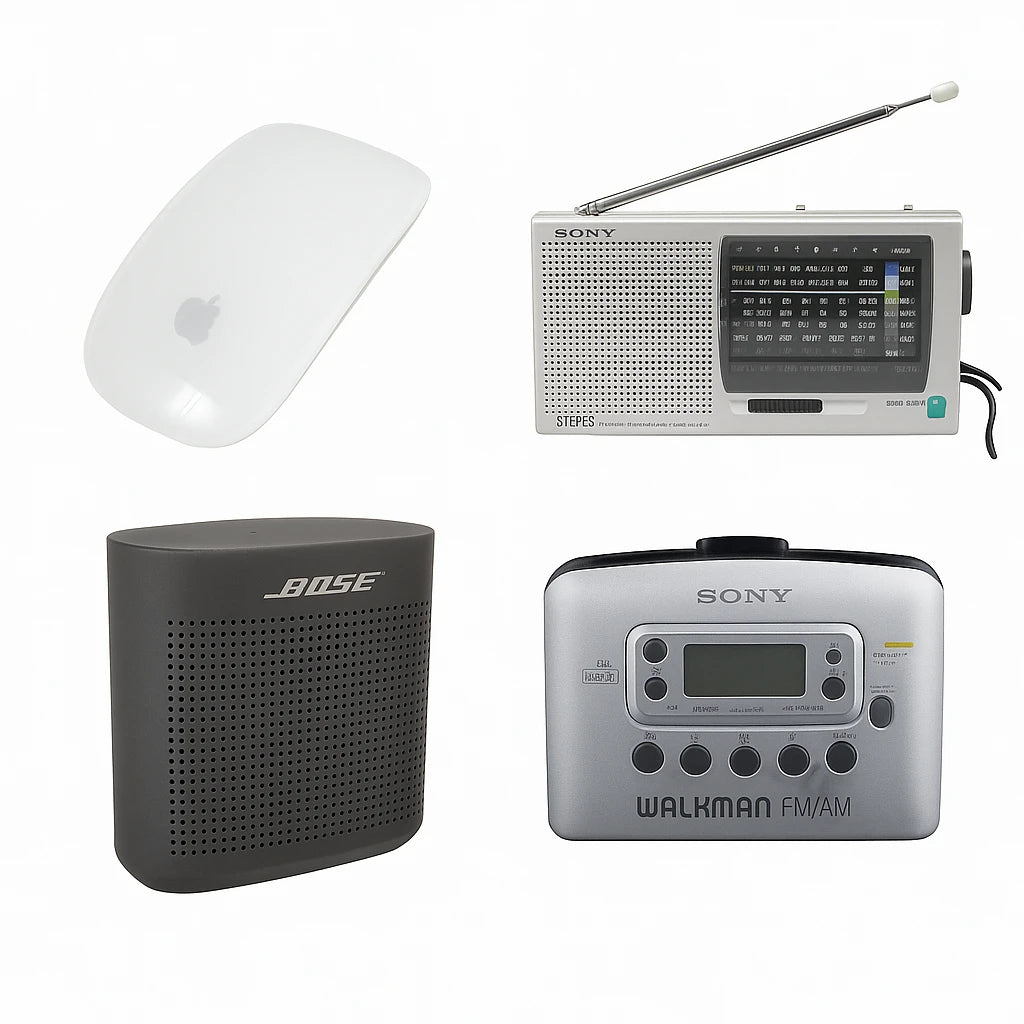
Cúlra Gearr
Cad a gheobhaidh tú: Léargas ar stair agus bunús an Olympus Pen EE-3.
Seoladh i 1973, bhí an Olympus Pen EE-3 mar chuid den tsraith cáiliúil Olympus Pen a dearadh ag Yoshihisa Maitani. Cruthaíodh an tsraith chun grianghrafadóireacht scannáin a dhaonlathú trína dhéanamh comhoiriúnach, inacmhainne, agus éasca le húsáid ag aon duine. Bhí tréith shainiúil an EE-3 ina mhéadar selenium a thiomáineann an nochtadh uathoibríoch—ag obair go hiomlán gan ceallraí.
Samhlaigh go dtéann tú ar aghaidh ar Olympus Pen EE-3 beag ag siopathrift , a chuid miotail brúite ag comhoiriúnú go foirfe le do láimh. Tá an charm láithreach—feictear é mar cheamara atá deartha do scéalta, ní do shonraí.

Príomhthréithe Teicniúla
Cad a gheobhaidh tú: Briseadh síos ar na príomhghnéithe a shainíonn simplíocht agus inúsáidteacht an cheamara.
Formáid leath-fráma
Leagann an socrú leath-fráma ar chumas duit 72 nochtadh a ghabháil ar rolla caighdeánach 36-nochtadh de scannán 35mm—ag dúbailt do chreatlach cruthaitheachta.
An Lionsa Zuiko
Tá an lionsa Zuiko 28mm f/3.5 seasta géar, ilúsáideach, agus oiriúnach do shráideanna, taisteal, agus úsáid laethúil doiciméadair.
Oibriú gan chadhnraí
Éilíonn an córas nochtadh uathoibríoch bunaithe ar mhéadar seleniam gan chadhnraí, ag tabhairt le chéile iontaofacht agus inbhuanaitheacht.

Conas a bhfaigheann daoine tairbhe as an EE-3 i 2025?
Cad a gheobhaidh tú: Tuairim faoi na cineálacha grianghrafadóirí a d'fhéadfadh an tairbhe is mó a bhaint as an gceamara beag ach láidir seo.
Déantar córas nochtadh uathoibríoch, le fócas seasta an Pen EE-3 a dhéanamh ar cheann de na pointí iontrála is inrochtana i gcloigeann scannán. Bíonn tosaitheoirí ag fás le a shimplíocht—níl rialuithe láimhe ann chun tú a mhoilliú. Do na daoine a ghlacann grianghraif ar shráideanna, spreagann a fhoirm dhíomhaoin agus a fhráma “réidh le snap” muinín.
Is féidir le scéalaíocht amhairc triail a bhaint as diptychs agus frámaí seicheamhacha, agus beidh turasóirí buíoch as a neart agus a ngeilleagar scannáin.Fuair tosaitheoir le déanaí an pléisiúr a bhaineann le péireáil frámaí comhoibritheacha—ag déanamh diptychs de sholas na cathrach agus margaí maidine, ag tógáil péirí amhairc a insíonn scéalta níos saibhre ná pictiúr aonair.

Úsáidí Cruthaitheacha agus Próisis
Cad a gheobhaidh tú: Spreagadh praiticiúil do thionscadail sráide, taistil, agus scéalaíochta le scannán leath-fráma.
Poitéinse agus poitéinse scéalaíochta
Tá an Peann EE-3 tar éis a bheith ina uirlis do dhírbheathaisnéisí amhairc agus scéalta laethúla beaga. Cuireann a lionsa 28mm an domhan i gcomhthéacs, ag cur an timpeallachta agus gníomh i ngach fráma.
Colláiste agus zines
Déantar an dearcadh dhá íomhá ar aon fráma a bheith ina chomhoibriú nádúrtha do ealaíontóirí colláiste, déantóirí zine, agus scéalaíocht analógach.

Treoir Ceannaigh: Cad atá le Seiceáil ar an Dara Lámh
Cad a gheobhaidh tú: Liosta seiceála de na rudaí le breithniú sula gcuirfidh tú infheistíocht i gcrónán vintage seo.
- ✅ Tástáil méadar selenium i solas geal.
- ✅ Seiceáil na cliceanna shutter go comhsheasmhach.
- ✅ Scrúdaigh an lionsa le haghaidh fungais nó scriosta.
- ✅ Féach ar shéalaí solais caitheamh nó ag crumbling.
Comhoibrithe agus Comhairle ar Fhíseáin
Cad a gheobhaidh tú: Breiseanna úsáideacha agus na comhoiriúnachtaí is fearr le haghaidh an cheamara seo.
Stocanna físe
Oibríonn an Pen EE-3 is fearr le ISO 100–400. Is clasaicí iontaofa iad Kodak ColorPlus, Fujifilm C200, agus Ilford HP5+ do stíleanna grianghraf éagsúla.
Ag iompar agus ag cúram
Is féidir le strap wrist simplí nó cás cosanta cabhrú le coinníoll a chothabháil le linn taistil agus stórála.
Ag scanadh diúltachtaí
Mar gheall ar an méid níos lú diúltachta, smaoinigh ar scanner flatbed nó scanner físe tiomnaithe chun sonraí a choinneáil.

Smaointe Deiridh
Cad a gheobhaidh tú: Spreagadh chun tiomantas a thabhairt don EE-3 le haghaidh do chéad eachtra analógach eile.
Tar éis na dtréimhsí, tá an Olympus Pen EE-3 fós ag lonrú mar cheamara film simplí, galánta, agus spreagúil. Leanann a fhoirm leath-fráma ar aghaidh ag spreagadh scéalaíochta cruthaitheach, cibé acu trí dhiptychs, sraith sráide, nó laethantaigh taistil. Tá a neamhspleáchas ó bhatareanna ag déanamh go bhfuil sé iontaofa go neamhchoitianta agus cairdiúil don chomhshaol. Samhlaigh ag leabhraigh trí nóta taistil atá líonta le priontaí beaga, taobh le taobh ó do EE-3—cuimhní cinn fíor, tactile a chothromaíonn simplíocht le fírinneacht.
Cinntí tapa
- Ceannaigh más mian leat ceamara film comhoiriúnach, saor ó bhatareanna.
- Skáinte do shráide, taisteal, agus scéalaíocht.
- Seiceáil an lionsa agus an méadar selenium roimh cheannach.
- Éalaigh más gá duit diúltachtaí níos mó do mhórghrianghrafadóireacht ealaíne.
Sochair
- Dearadh comhoiriúnach agus discréideach.
- 72 grianghraf in aghaidh an rolla—eacnamaíocht scannáin.
- Ní gá le bataireanna.
- Skáinte do dhiptychs agus leaganacha cruthaitheacha.
Lochtanna
- Is féidir le diúltachtaí leath-fráma méid na méadaithe a theorannú.
- Lionsa socraithe—níl roghanna inathraithe ann.
- Is féidir le méadar selenium dul in aois le himeacht ama.
Ceisteanna Coitianta
Cé mhéad grianghraf is féidir le Olympus Pen EE-3 a ghlacadh ar rolla amháin? Formáid leath-fráma a dhúbailtíonn noiméad—72 grianghraf ó rolla scannáin caighdeánach 36-noiméad.
An bhfuil gá le bataireanna don Olympus Pen EE-3? Níl, úsáideann sé méadar solais selenium agus tá sé go hiomlán meicniúil, rud a chiallaíonn nach bhfuil gá le bataireanna.
An bhfuil an Olympus Pen EE-3 maith do thosaitheoirí? Sea, is ceamara simplí é le stíl pointe agus shoot le fócas socraithe agus nochtadh uathoibríoch.
Cad ba chóir dom a sheiceáil nuair a bhíonn mé ag ceannach Olympus Pen EE-3 ar an dara lá? Scrúdaigh an méadar, an shutter, soiléireacht an lionsa, agus na séala solais le haghaidh inúsáidteachta agus coinníoll.
Faigh samhlacha Olympus Pen EE-3 ar an dara lá ag
Ag lorg roghanna digiteacha freisin? Scrúdaigh ár C ceamaraí le haghaidh meascán ilstíle.










0 tuairimí